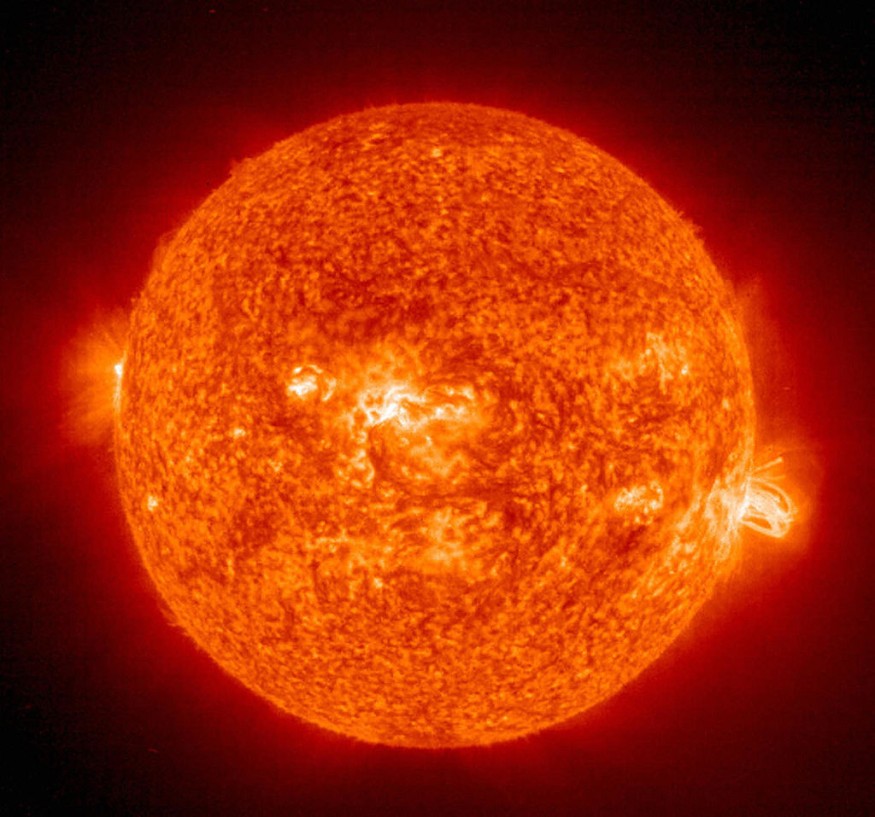Officials in charge of monitoring space weather said a severe solar storm might disrupt navigation, electrical grids, satellites, and radio broadcasts.
The National Oceanic and Atmospheric Administration's (NOAA) Space Weather Prediction Center (SWPC) has been tracking a series of solar outbursts that began on Monday (Nov. 1).
Since then, the sun has produced several coronal mass ejections (CMEs), which are bubbles of hot gas and magnetic field that can originate from any part of the sun. Such activity can originate from any part of the sun. The current examples have headed out into space toward Earth, making them of special interest to humans.
After one of those explosions engulfed a previous storm, some solar weather watchers nicknamed it a "cannibal CME."

Strong Solar Flare Could Disrupt GPS, Navigation
A powerful solar flare erupted earlier this week, potentially affecting GPS and communication satellites in the following days.
The SWPC stated the geomagnetic storm might create "voltage abnormalities in the electric power system," "false alarms on some protection equipment," and "intermittent satellite navigation (GPS) issues," according to a statement obtained by Express.
Surface charging and orientation issues, according to NOAA, may have an impact on spacecraft. According to the agency, the storm may interfere with high-frequency radio communications at high latitudes, impeding long-distance airline flights.
Solar flares will not expose airline employees or passengers, including pregnant women, to radiation caused by CMEs. As a result, there is no need to be alarmed. According to HPS, research of airline flight attendants suggests that even individuals who earn a living as flight attendants have no evidence of negative consequences from occupational radiation exposure.
Pregnant women subjected to medical radiation do not demonstrate any hazards to the developing embryo/fetus from radiation levels significantly greater than what anyone on an airline will be exposed to.
NOAA satellites detected the CME late on Wednesday, with the storm reaching the Deep Space Climate Observatory (DSCOVR) probe. DSCOVR is around 1 million miles (1.5 million kilometers) away from Earth towards Sun.
Solar Flares Explained
Solar flares, according to NASA (via DW), are strong blasts of radiation. A flare's harmful radiation cannot penetrate through Earth's atmosphere to physically hurt humans on the ground.
Officials designated the solar storm as an "X1-class flare." According to the report, the X-class flares are the most intense, while the number indicates the flare's strength.
As a result, X2 will be twice as powerful as the one on Thursday. Flares classed as X10 or greater - 10 times the brightness of the present flare - are "unusually severe."
The NOAA Space Weather Prediction Center reported on Thursday that a "R3 (Strong radio blackout) occurrence occurred due to an X1 flare."
The space voyage of German astronaut Matthias Maurer, who is scheduled to launch on Sunday to the International Space Station (ISS), is not thought to be in jeopardy.
The flare's high-energy particles may cause specific atoms in the Earth's atmosphere to light, resulting in auroras throughout Central Europe and North America.
The event, however, may only be witnessed if the weather is clear.
Check out more news and information on Space in Science Times.
© 2025 ScienceTimes.com All rights reserved. Do not reproduce without permission. The window to the world of Science Times.












